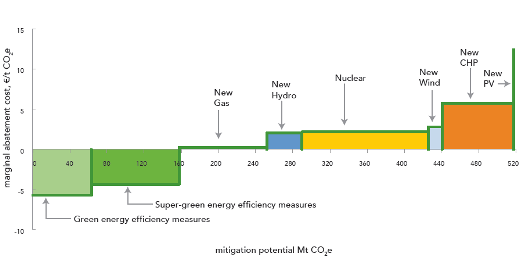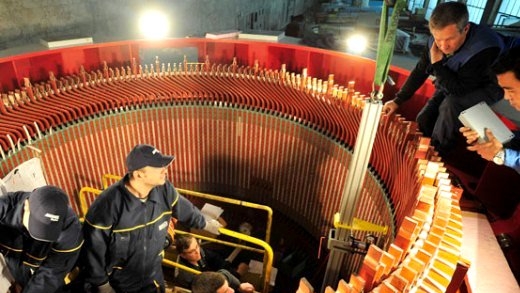Challenges of Climate Change: Electricity demand has exceeded supply for a decade, and 50% of the current energy base is made up of domestic lignite, which will be fully exploited within the next 30-45 years. More and cleaner generation is needed to avoid blackouts and expensive imports.
Lignite is very emissions-intensive and responsible for some 70% of the overall carbon dioxide equivalent (CO2e) emissions in the country. Imported oil further adds to the emissions intensity of energy while gas imports constitute only 2% of primary energy. The result is that the ratio of greenhouse gas emissions to GDP is 5 times higher than the EU average.
Opportunities for Green Actions: Aggressive development of gas supply is recommended such that gas completely replaces lignite once the existing lignite plants reach the end of their economic life. This shift implies construction of new gas generation plants, a new cross-border gas pipe line, new transmission and distribution lines, and new gas supply infrastructure. In addition, new hydropower and wind plants would be constructed.
A regional strategy should be developed to address the concerns of potential private investors, and to ensure that incentive schemes deliver renewables in the most cost-effective manner. On the demand side, energy efficiency measures that have proved to be cost-efficient should be implemented as quickly and broadly as possible.
Key elements of a successful energy efficiency strategy are strengthened institutional capability for design and implementation, and available low-cost capital for capital intensive, long-payback measures such as building retrofit.

The energy sector Marginal Abatement Cost (MAC) curve ranks mitigation measures from both demand and supply from least to most expensive. The curve displays the unit cost of abatement (present value of net investment cost per unit of abated carbon (CO2e)) and the abatement potential (MtCO2e) of each proposed green measure for 2010-2050.
Abatement potential for each measure corresponds to the width of the bar representing the measure. Abatement unit cost of each measure is reflected in the height of the bar. The total width of the MAC curve is the sum of abatement potential of all options implemented individually (if options were implemented together, they would have a smaller impact as some of them target the same emissions). Measures with a negative unit cost result in net revenues for the public sector.
Previous Bank-supported Activities: During the period 2009 to 2013, the FYR Macedonia Sustainable Energy Project supported the rehabilitation of schools and kindergartens throughout the country to save energy, reduce heating costs, and deliver warmer classrooms and improved air quality. The project also helped to expand renewable energy (RE) efforts and provided seed money for the construction of the first big solar plant in the country, contributing to lower CO2 emissions and a more dependable energy supply.
The full text of the FYR Macedonia Green Growth Country Assessment can be found here.
